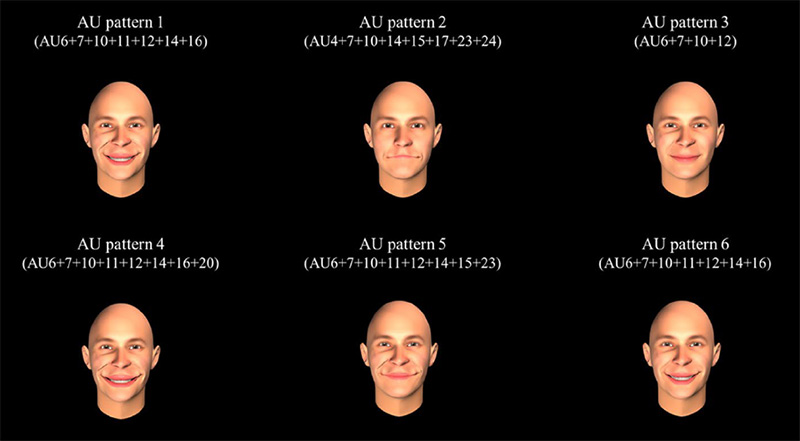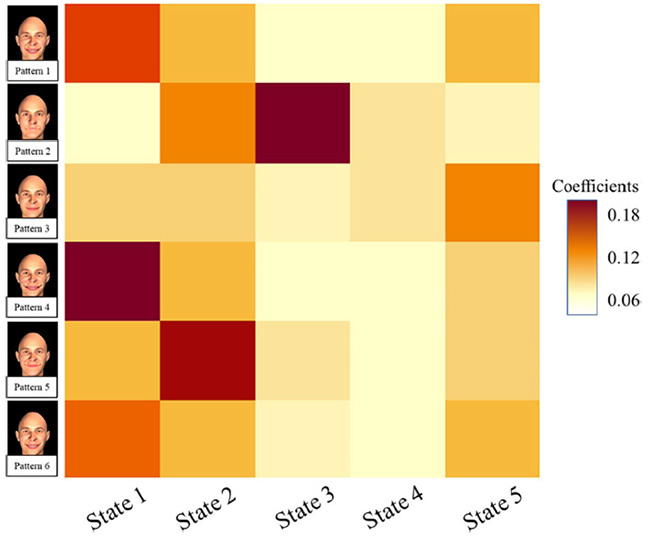SATO Wataru Laboratory
Spatio-temporal properties of amused, embarrassed and pained smiles
(Namba, Sato, & Matsui: J Nonverbal Behav)
Smiles are universal but nuanced facial expressions that are most frequently used in face-to-face communications, typically indicating amusement but sometimes conveying negative emotions such as embarrassment and pain.
Although previous studies have suggested that spatial and temporal properties could differ among these various types of smiles, no study has thoroughly analyzed these properties.
This study aimed to clarify the spatiotemporal properties of smiles conveying amusement, embarrassment, and pain using a spontaneous facial behavior database.
The results regarding spatial patterns revealed that pained smiles showed less eye constriction and more overall facial tension than amused smiles; no spatial differences were identified between embarrassed and amused smiles.
Regarding temporal properties, embarrassed and pained smiles remained in a state of higher facial tension than amused smiles.
Moreover, embarrassed smiles showed a more gradual change from tension states to the smile state than amused smiles, and pained smiles had lower probabilities of staying in or transitioning to the smile state compared to amused smiles.



By comparing the spatiotemporal properties of these three smile types, this study revealed that the probability of transitioning between discrete states could help distinguish amused, embarrassed, and pained smiles.
Return to
Recent Research.
Return to
Main Menu.


